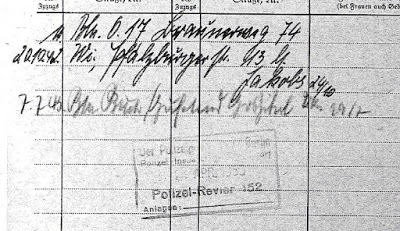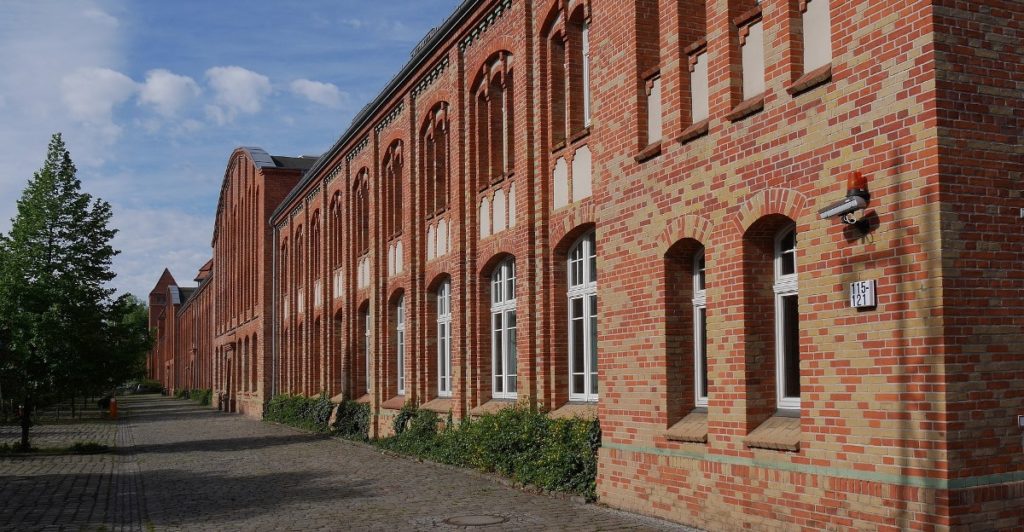Back in October, I sent a request to the Landesarchiv for the Einwohner Melde Kartei (EMK) records of several individuals from Josef’s family. I got a reply in December and it contained good news and bad news.
I had requested the cards for:
- Josef Jakobs
- Margarete Jakobs – Josef’s wife
- Emma Jakobs – Josef’s mother
- Maria Jakobs – Josef’s sister
- Johanna Catharina Knöffler – aunt of Margarete Jakobs
The bad news is that they only had the EMK of one individual from that list, which is quite disappointing. I had read that many of the EMK records had been destroyed during or after the war (bombing, etc) but I had hoped for at least two or three hits.

Copyright GK Jakobs 2020
The good news… if I had to choose just one card off that list… it would have been Maria Jakobs, Josef’s sister. And, that’s exactly the card that they still had on file!
We don’t know a lot about Maria. She was a single woman who, in the mid 1920s, had a child out of wedlock which put her at loggerheads with her mother, Emma. Given Emma’s history… that’s rather like the pot calling the kettle black. Emma had her own share of illegitimate children, with a Catholic priest no less, and both Josef and Maria were fruits of that illicit liaison!
Maria was apparently a heavy smoker and my father had thought that she died towards the end of the war, or shortly thereafter. He believed that she was deceased by the time her mother Emma passed away in 1952.
I had tracked Maria through the Berlin address books up to 1943. She was living at Braunerweg 74 in Berlin-Friedrichshain. The street had started out as Grüner Weg in the 1800s, got changed to Paul-Singer-Strasse in the early 1900s but with the advent of the Nazis in 1933, the street got renamed to Brauner Weg. After the war it reverted to Grüner Weg (sometimes Roter Weg) and… in 1947, it was renamed back to Singer Strasse (minus Paul). Can we say “confusing”?? Braunerweg was heavily bombed during the war and it seems possible that at some point Maria was left homeless.
Some of the address books from 1941 have Maria living at her mother’s residence at Pfalzburgerstrasse 13 in Wilmersdorf which is a bit confusing given that later address books from 1943 have her living at Braunerweg 74. The EMK sheds a bit more light on the timing of her movements, but also leaves us with some unanswered questions.

Line 1 – At some date (unknown), Maria moved to Berlin O[st?] 17 and lived at Braunerweg 74 [The O17 shows up frequently in front of this address in the Berlin address books ].
Traugott Vitz thought it might be “n[ach] Berlin 6.17”, that she had come to Berlin in June 1917 but that does not seem likely. Maria and her family moved to Berlin in 1905 and, as far as I know, she would have been living in the family home in 1917. Although, I suppose it’s always possible that she moved out of the family home in June 1917, to Braunerweg 74.
Line 2 – On 20 October 1942, she moved to Wi[lmersdorf], Pfalzburgerstrasse 13. The EMK office was notified on 24 October of her move by some Jakobs. The initial is unclear – it could be a “G” although we have no “G Jakobs” in our family (at least not at that point). It could also be a warped “B” and might stand for “bei” – that she lived “bei Jakobs” which makes a bit more sense.
Line 3 – On 7 July 1943 Maria moved to Berlin-Buch, a sub-district at the extreme northeast corner of Berlin, part of the Berlin-Pankow district. With the help of Traugott Vitz, the next two words seem to be “Hufeland Hospital”. The date of the move was registered on 19 (or 29) July of that same year (1943). The use of the word “Hospital” seems a bit odd but I have come across other sources and references which also use the word “hospital” in relation to Hufeland Hospital.
As it turns out, Hufeland Hospital was not the only medical premise in Berlin-Buch. In the early 1900s, the Buch subdistrict became the central hub for a number of medical clinics and sanitoria. Given that Maria was a heavy smoker, and my father thought that she may have died of lung cancer, I suppose it is possible that she was sent to a chest or lung clinic in Berlin-Buch.
But… beyond that, I have not found anything. The EMK card does not list any further addresses so it would seem likely that Maria died at Hufeland Hospital. While Ancestry has Berlin Deaths up to 1955 available for viewing, I have found no record for any variation of Maria Jakobs. Which leaves us one step closer to discovering her final resting place but… still a long ways away.
Traugott also pointed out that Hufeland Hospital was associated with the Aktion T4 of the Nazis in the late 1930s and early 1940s – the mass killing (inaptly named “euthanasia”) of those deemed worthless by the Nazis, specifically those with mental illness or other “disabilities”. Patients at various medical and care facilities who suffered from a variety of ailments (epilepsy, senile dementia, criminal insanity, schizophrenia, etc) were identified and then shipped to extermination centres where they were gassed to death. The nearest extermination centre to Berlin would have been Brandenburg (operational until late 1940 and Bernburg, operational to the end of July 1943.
I admit to being a bit stunned by this information. It would explain the absence of a death registration in Berlin although Traugott noted that Maria’s name does not appear on any of the Aktion T4 lists, although they may not be completed.
I sent off a request to Bad Arolsen Archives and the International Tracing Service and asked for any information they might have. Fingers crossed they might have something…
